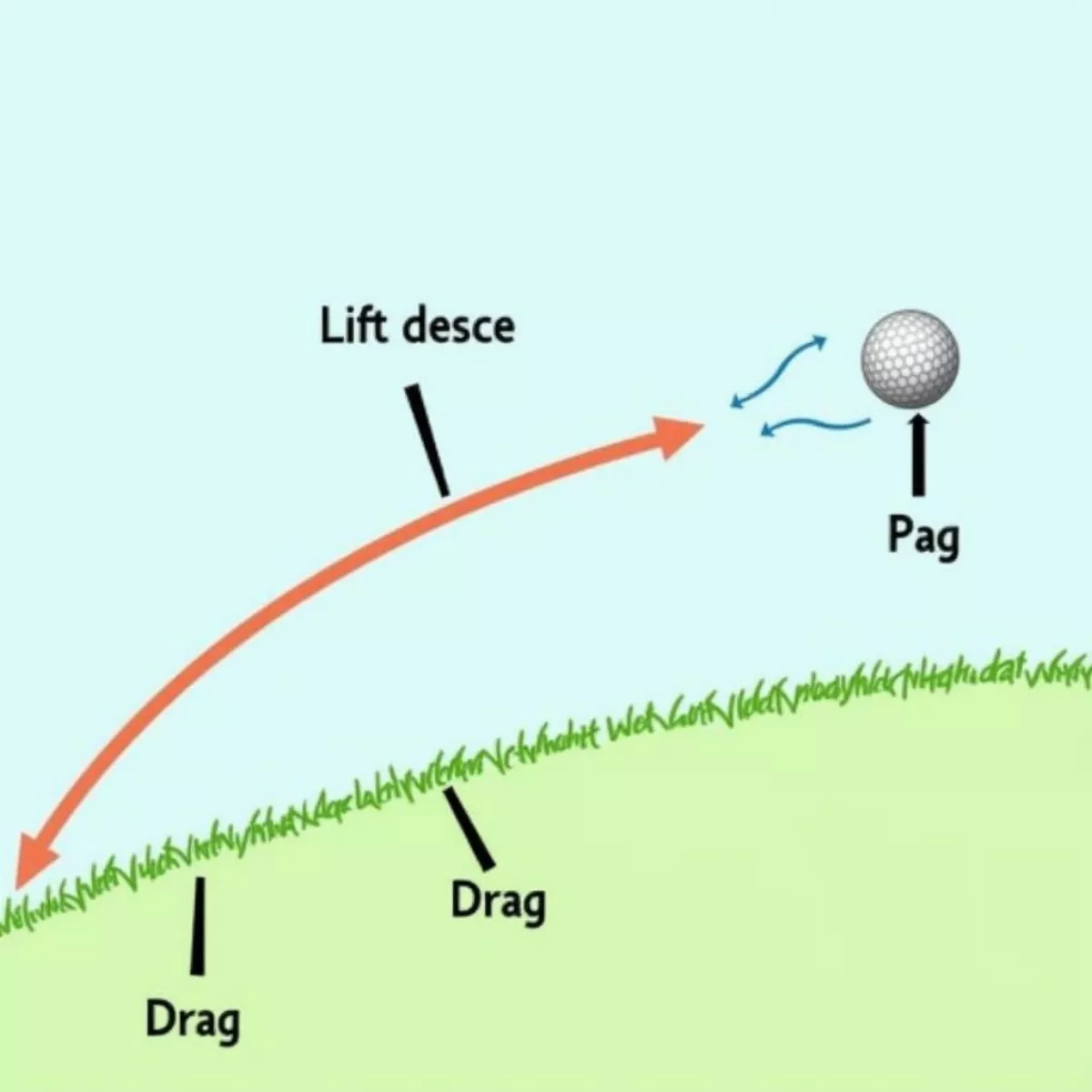Golf is more than just a game of precision; it’s a dance of physics, where every swing sets in motion a beautiful arc of potential. Understanding the trajectory of a golf ball can significantly enhance your game, allowing you to strategize your shots with confidence. In this guide, we’ll break down everything you need to know about the factors that influence ball flight, the physics behind it, and tips to control your game.
What is Trajectory in Golf?
The trajectory of a golf ball refers to the path it takes through the air after being struck by a club. This path is influenced by several factors, including the angle of the shot, club speed, loft, and environmental conditions like wind and humidity. By understanding the mechanics behind trajectory, golfers can learn to improve their accuracy and distance.
Key Components Aiding Golf Ball Trajectory
Understanding how these components influence trajectory is essential:
- Launch Angle
- This is the initial angle at which the ball leaves the clubface.
- A higher launch angle can increase the carry distance.
- Spin Rate
- The amount of spin imparted on the ball affects lift and drag.
- Backspin can create more lift, while sidespin can lead to hooks and slices.
- Club Speed
- The speed of the clubhead at impact directly contributes to how far the ball travels.
- Faster club speeds usually lead to longer shots, but control and accuracy must also be considered.
- Loft of the Club
- The angle of the clubface at impact.
- Higher lofted clubs will produce a higher ball flight.
- Environmental Conditions
- Wind direction, temperature, and humidity can alter a ball’s trajectory.
- For example, a tailwind can help increase distance, while a headwind can decrease it.
The Physics of Golf Ball Trajectory
At the heart of trajectory lies the interplay of physics principles, namely aerodynamics. The two primary forces acting on a golf ball during flight are lift and drag.
- Lift is generated through the ball’s spin as it moves through the air.
- Drag is the resistance the ball encounters from the air.
 Golf ball trajectory aerodynamics
Golf ball trajectory aerodynamics
Key Forces in Play
| Force Type | Description | Effect on Trajectory |
|---|---|---|
| Lift | Generated by backspin | Helps maintain altitude |
| Drag | Air resistance | Slows the ball down |
| Gravity | Pull of the earth | Pulls the ball back to land |
Why Understanding Trajectory Matters
For golfers, understanding ball trajectory is critical for several reasons:
- Accuracy: Knowing how your shots behave can improve your aim and alignment.
- Distance Control: Adjusting launch angles according to club choice can maximize your distance.
- Course Management: Anticipating how the ball reacts to different conditions allows for better strategy.
Tips for Mastering Golf Ball Trajectory
Practice Consistency
- Use the Right Equipment: Ensure you have the right driver, irons, and golf balls suited to your swing mechanics.
- Monitor Swing Speed: Use a swing analyzer to track your club speed and adjust accordingly.
 Golfer analyzing swing on driving range
Golfer analyzing swing on driving range
Experiment with Club Selection
- Change Clubs: Use different irons or woods to see how the trajectory changes.
- Dynamic Loft Adjustment: Experiment with altering your ball position to change the effective loft impact.
Understand Environmental Impact
- Adjust for Wind: When the wind blows, club selection and aim can shift dramatically.
- Into the wind: Lower trajectory shots may be beneficial.
- With the wind: Higher trajectories can take advantage of tailwinds.
Leverage Technology
- Launch Monitors: Consider using a launch monitor to get feedback on your shots regarding launch angles and spin rates.
Consistent Practice
- Range Sessions: Spend time on the range practicing trajectories with varying clubs and angles.
 Professional golfer swinging iron on golf course
Professional golfer swinging iron on golf course
Conclusion
The trajectory of a golf ball is influenced by numerous factors, from mechanics to environmental conditions. Gaining a comprehensive understanding of these elements allows you to make better decisions on the course, ultimately enhancing your performance.
Each time you step onto the green, remember that mastering the trajectory is as much about art as it is about science. Whether it’s choosing the right club, adjusting for conditions, or tweaking your swing, becoming a better golfer is a continual learning process.
Key Takeaways
- The trajectory of a golf ball is influenced by launch angle, spin rate, club speed, loft, and environmental conditions.
- Understanding physics can help improve your game.
- Experiment with club selection and practice consistently for mastery.
- Use technology to track your shots for better results.
FAQs About Golf Ball Trajectory
- What is the ideal launch angle for a driver?
- The average ideal launch angle for a driver is between 12 to 15 degrees, but it varies based on individual swing characteristics.
- How does backspin affect distance?
- More backspin can create more lift, allowing the ball to stay in the air longer—although too much can reduce distance as drag increases.
- Can weather conditions change my shot?
- Yes, factors like wind and humidity significantly affect how the ball travels through the air.
- Is there a way to measure my ball’s trajectory?
- Yes, using a launch monitor can provide insights into your launch angle, spin, and distance.
- What types of clubs help with trajectory?
- Woods and drivers generally produce a higher trajectory, whereas irons can be better for lower, more controlled shots.
- Does my stance affect the trajectory?
- Absolutely! A wider stance generally allows for a more stable swing, which can lead to a better trajectory.
- Can I control the trajectory with my swing?
- Yes, by adjusting your swing technique, like the angle of attack, you can alter the trajectory substantially.
- What is the effect of altitude on distance?
- At higher altitudes, the air is less dense, which can lead to longer distances because of decreased drag.
By following these insights and tips, you’ll be well on your way to mastering the trajectory of your golf ball and improving your overall game. Happy golfing!